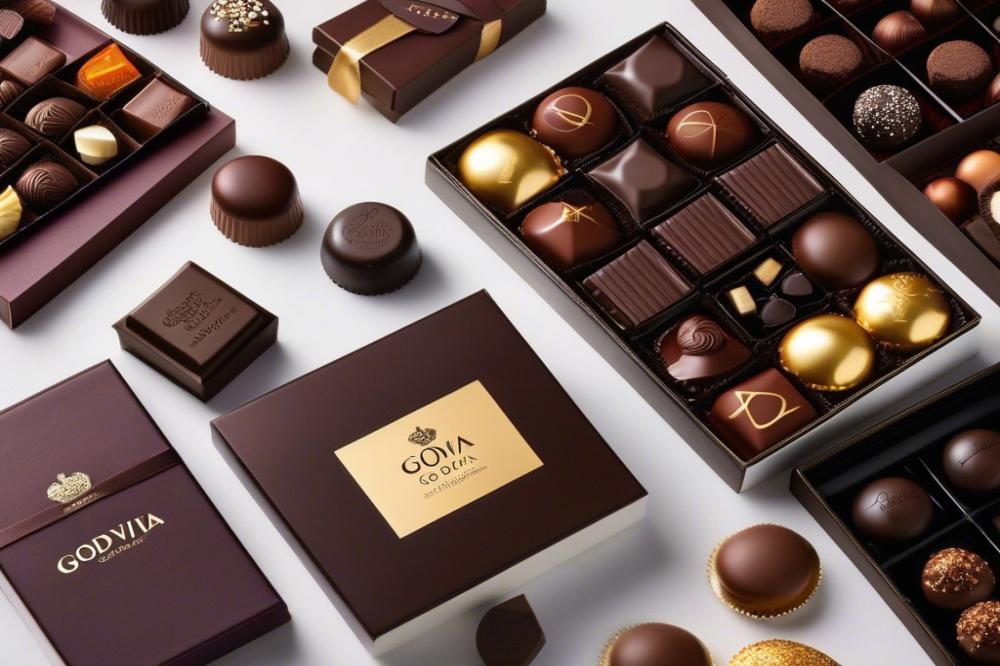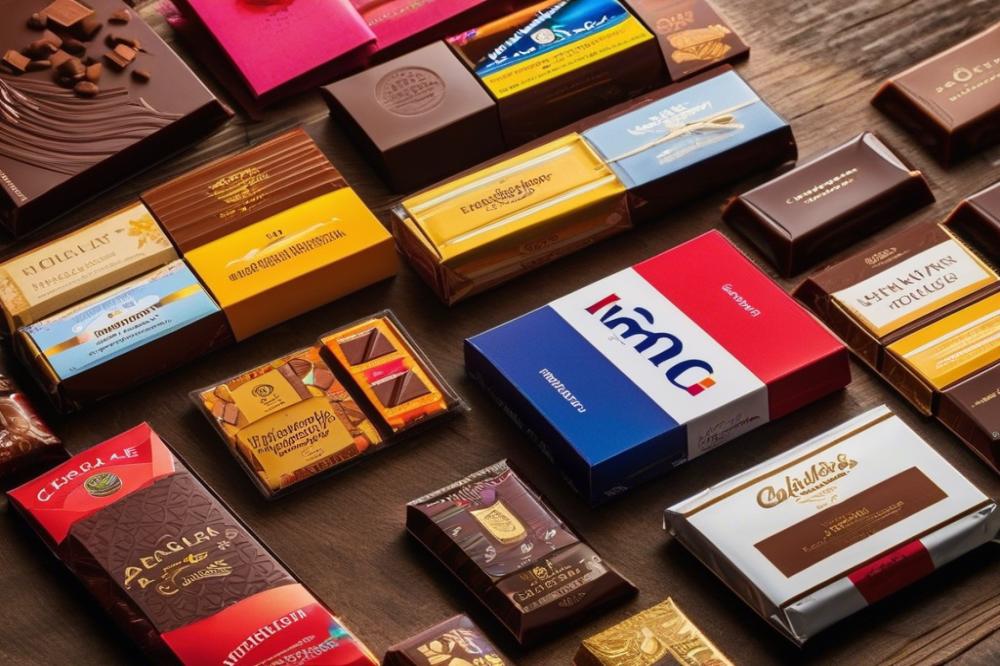Introduction
Yorkie is a chocolate bar that has carved its niche in the UK confectionery market since its launch in 1976. This treat is known for its solid chocolate blocks, often featuring a rich, creamy texture that appeals to many. Over the years, it grew in popularity, not just for its taste but also for its interesting branding decisions.
In the context of chocolate bars, its marketing strategy stood out. The branding created an image that resonated with a certain demographic. This was not just any chocolate; its promotions often highlighted a theme of masculinity and ruggedness. By doing so, it struck a chord with its target audience—men looking for something that felt hearty and substantial.
The concept of the “Man’s Chocolate Bar” was a clever move in consumer behavior. Advertisements portrayed the Yorkie as a treat for those who embraced adventure and strength. In a society where traditional gender roles often influence purchasing decisions, this kind of emotional appeal to masculinity became highly effective.
Understanding this historical context helps to see why the Yorkie was marketed the way it was. As competition in the confectionery industry intensified, brands needed to differentiate themselves. A chocolate bar that targeted men specifically was a unique approach in an otherwise crowded field.
As the brand evolved, so did its marketing strategies. The iconic slogan, “It’s not for girls,” sparked discussions about gender and marketing. This approach created buzz and helped position the Yorkie firmly in the minds of consumers. Through this lens, one can appreciate how effective advertising can be when aimed at specific desires and identities.
Historical Context

Origin and Creation of the Yorkie Bar
The chocolate bar was introduced by Nestlé in 1976. Initially, it was aimed at the busy working man looking for a good snack. The product was made with chunky pieces of solid milk chocolate. It offered a satisfying bite that resonated with its target audience. This approach tapped into the growing consumer interest in convenient yet enjoyable treats.
Launch Date and Early Marketing Strategies
During its launch, advertising focused heavily on a masculine image. Campaigns often featured tough, rugged men enjoying the bar. The branding emphasized strength and durability, qualities often associated with masculinity. Early marketing strategies highlighted the bar’s size and richness. This approach attracted attention and set it apart from competitors in the UK confectionery landscape.
Cultural Landscape of chocolate bars in the UK During the Launch
In the 1970s, the UK chocolate market was diverse. Many products catered primarily to women and children, with an emphasis on enjoyment and sweetness. Brands like Cadbury dominated, presenting chocolate as a friendly treat. Yorkie’s distinct positioning as a “man’s chocolate bar” was refreshing. It cleverly played on consumer behavior and evolving ideas about masculinity. The campaign’s emotional appeal resonated with men seeking a snack that matched their identity. Traditional roles were beginning to shift, and this bar embraced that change. The contrast in themes attracted curiosity and loyalty from a new demographic.
Branding and Packaging

Design elements that emphasize masculinity
Bold colors and strong visuals dominate the packaging. Dark blues and blacks often provide a rugged look. This choice of color communicates strength and robustness. Additionally, the thick, blocky font used on wrappers suggests durability, attracting a male audience. Images of men engaging in adventurous activities were also part of the marketing strategy. By associating the product with traditional masculine traits, the brand establishes a clear identity.
Contrast with other chocolate bars marketed toward women
Many competing chocolate bars target women and emphasize elegance or indulgence. Unlike those brands, the “man’s chocolate bar” does not focus on delicacy. Instead, it offers a more straightforward proposition: substantial enjoyment. While others use soft colors and whimsical designs, this chocolate adopts a no-nonsense approach. The packaging clearly sets it apart from the offerings designed for a female audience.
Evolution of Yorkie branding over the years
Over the years, the branding of this popular chocolate has undergone significant changes. Initially, the focus was largely on the product’s size and chunkiness. As consumer behavior evolved, advertising began to highlight fun and humor, appealing to a broader audience. The tagline “It’s not for girls” became iconic and further emphasized its target market. Historical context plays a role in these shifts; societal changes influenced how brands present masculinity. Today, the brand continues to balance its strong identity while adapting to changing views about gender and consumption in the UK confectionery market.
Advertising Strategies
Iconic Advertisements and Their Messaging
Throughout the years, memorable advertisements have shaped the brand identity of this chocolate bar. Each commercial cleverly crafted messages that resonated with a specific audience. Many campaigns showcased the product as tough and rugged, reinforcing a sense of masculinity often associated with male consumers. Advertisements featured men in bold scenarios, eating a chocolate bar to emphasize strength and adventure. This effective usage of imagery tapped into cultural ideals, making the product appealing to those wanting to connect with these macho themes.
Use of Humor and Rugged Imagery in Marketing
Humor played a crucial role in several marketing strategies. Many advertisements relied on jokes and playful situations to capture the audience’s attention. By employing comic relief, the brand engaged consumers in a light-hearted manner. Imagery in these campaigns often included rough outdoor settings, such as mountains and forests. These visuals communicated resilience while appealing to adventurous spirits. Consequently, customers associated the product with daring experiences, enhancing the overall attraction to this chocolate bar in the competitive landscape of UK confectionery.
Target Audience Identification and Engagement
Identifying the target audience was vital for effective marketing. The branding focused on men, particularly those who valued masculinity and independence. Understanding consumer behavior helped shape advertising tactics and messages. Engaging this demographic required careful consideration of emotional appeal. Advertisements not only promoted the taste of the chocolate but also connected with desires for strength and adventure. This connection created a bond with consumers, making them feel powerful when choosing the product. By aligning the chocolate bar with these values, the brand fostered a loyal following among its intended audience.
Consumer Behavior
Analysis of Consumer Perceptions of Yorkie
Marketing strategies often target specific demographics. In this case, the branding of Yorkie emphasized a rugged, no-nonsense appeal. Many consumers began to associate the chocolate bar with male consumers, which influenced perceptions in the UK confectionery market. Packaging often featured bold colors and muscular imagery, reinforcing the brand’s masculine identity. This approach did not just appeal to men; it also intrigued women. The idea that this chocolate bar was specifically designed for men created a certain allure.
Impact of Gender Stereotypes on Buying Behavior
Stereotypes about masculinity greatly impact purchasing habits. Traditional views suggest that men prefer hearty snacks. This image aligns with the promotion of Yorkie as a treat that embodies strength and toughness. Advertising emphasized these traits in a way that made the product more appealing to men. Consumers often picked up Yorkie bars during their shopping, partly influenced by societal expectations. The notion of enjoying a chocolate bar designed for men pushed some women to choose alternatives. This dynamic reflects how gender roles shape decisions in consumer behavior and preferences.
Emotional Appeal of Yorkie as a “Masculine” Treat
Emotional connections play a vital role in how people choose products. The marketing around this chocolate bar evokes specific feelings related to masculinity. Enjoying a Yorkie can make a person feel strong or adventurous. This emotional appeal taps into deeper cultural notions of what it means to be a man. By promoting an image of traditional masculinity, the brand has cemented its place in the hearts of its target audience. When people see Yorkie, they don’t just see chocolate bars; they see an identity. This connection strengthens loyalty among consumers who identify with or aspire to those traits.
Impact on the Chocolate Market
Yorkie’s Role in Shaping Marketing Strategies for Other Brands
One bar stood out in the UK confectionery scene, influencing how brands approach advertising. This brand adopted a bold and unapologetic strategy that highlighted masculinity. By focusing on a male audience, it carved a niche in an otherwise crowded market. Other manufacturers began to study this approach closely. They realized that targeting specific demographics could lead to increased sales. As a result, several chocolate bars started emphasizing strength and rugged qualities.
Influence of “Man’s Chocolate Bar” on Consumer Choices
The idea of a “man’s chocolate bar” resonated with many consumers. This unique positioning led to shifts in consumer behavior, especially among men. They began seeking out products that aligned with their identity. Chocolates started to adopt more robust packaging and masculine themes. Ads featured outdoor adventures, sports, and elements that spoke to traditional masculinity. Such strategies have led people to make purchasing decisions based on emotions rather than just taste.
Legacy and Continued Relevance in the Chocolate Market
The impact of this branding strategy can still be felt today. Many brands have adopted similar marketing tactics that lean into stereotypes of strength and masculinity. This approach has generated conversations about how gender influences consumer choices. Brands now work to align their products with the evolving definition of masculinity. While society’s views on gender are changing, the emotional appeal remains powerful. The legacy of the “man’s chocolate bar” lives on, guiding how brands connect with their audience in an authentic way.
Final Thoughts on a Sweet Legacy
The marketing strategy behind the chocolate bar achieved notable success. Presenting the product as a “man’s chocolate bar” crafted a distinct identity that resonated with many consumers. This clever branding tapped into cultural notions of masculinity, appealing to those who sought a treat that felt rugged and substantial. The advertising campaigns reinforced this idea, often depicting men in adventurous settings enjoying the bar, further embedding it in the minds of the target audience.
Looking at the relationship between branding and consumer behavior can reveal much about this phenomenon. When a product is marketed specifically to a demographic, it creates a sense of belonging and a personal connection. Shoppers often make purchases based on how well they feel a product aligns with their identity or aspirations. By focusing on a masculine image, the chocolate bar carved out a niche that set it apart from competitors.
Moreover, the lasting impact of this confectionery in history cannot be overlooked. It became more than just a snack; it represented a cultural moment reflecting changing attitudes. As confectionery markets continue to evolve, the story of this chocolate bar serves as a reminder of how strategic marketing can shape consumer perceptions. Today, it remains a notable example of successful advertising that resonates with many, showcasing the power of thoughtful branding in a crowded marketplace.



